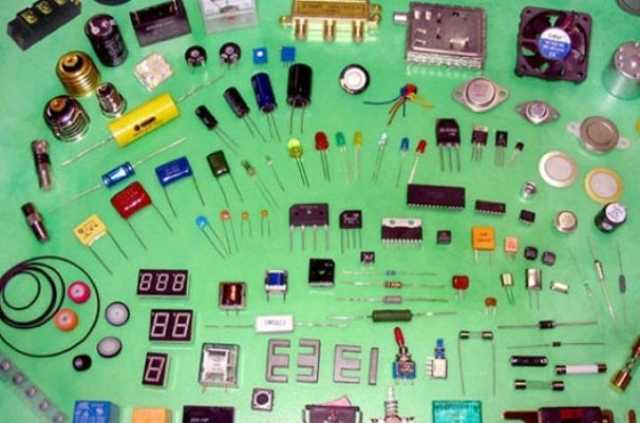
Australian researchers have created a two-dimensional material of carbon and nitrogen (C3N) that can be used to make small and efficient electronic components.
As silicon-based technology approaches its inherent limits, a material engineered by researchers at the University of Queensland could promise the next generation of electronics with improved memory, speed and features.
This carbon-based material could help fuel the growing nanoelectronics market, which is expected to be worth $162 billion by 2027.
Professor Debra Bernhard from the Australian Institute of Bioengineering and Nanotechnology (AIBN) and the School of Molecular Chemistry and Biosciences (SCMB) said potential applications for the technology include telecommunications systems and medical devices.
Bernhard added: “Graphene has long been considered a promising material for use in the electronics industry with high mechanical strength and electrical and thermal conductivity, but it has limitations.”
The research team engineered a material with nitrogen atoms in two layers of graphene in a honeycomb pattern, and then experimented with changing and twisting the layers.
This C3N double-layer material has the ability to expand electronic capabilities at the nanoscale, which provides greater efficiency in a smaller area.
A change in the alignment of the layers could lead to the ability to adjust the flow of electricity for different devices. “The new structures allow the production of different electronic components that can be combined to produce electronic components with diverse needs and capabilities, such as refrigerators and smart watches,” Bernhard said.
This researcher stated: This issue is very exciting; “Because it is a combination of theoretical predictions and experimental research to produce new devices that can be used in many areas such as computer memory and flexible electronics.”
In the end, he noted: This research was an important step, but more work is needed to produce this material more easily at a lower cost.
I have to say; The results of this research have been published in Nature Electronic.

Элвис Пресли, безусловно, один из наиболее влиятельных музыкантов в истории. Родившийся в 1935 году, он стал иконой рок-н-ролла благодаря своему харизматичному стилю и неповторимому голосу. Его лучшие песни, такие как “Can’t Help Falling in Love”, “Suspicious Minds” и “Jailhouse Rock”, стали классикой жанра и продолжают восхищать поклонников по всему миру. Пресли также известен своими выдающимися выступлениями и актёрским талантом, что сделало его легендой не только в музыке, но и в кинематографе. Его наследие остается живым и вдохновляет новые поколения артистов. Скачать музыку 2024 года и слушать онлайн бесплатно mp3.
http://krasmamochki.5nx.ru/viewtopic.php?f=8&t=18564
http://a90275db.beget.tech/2024/01/30/blyuz-garmoniya-strasti-i-boli.html
https://securityholes.science/wiki/User:Randell84T
http://deti.liveforums.ru/viewtopic.php?id=13596#p231140
http://lacettisvao.offtopic.su/viewtopic.php?id=5030#p19984
https://profbuh.forumkz.ru/viewtopic.php?id=6411#p10660
http://dp-spb.com/forum/thread-1790/
https://vkontakte.forum.cool/viewtopic.php?id=14902#p43004
http://www.jeromebaray.com/afm/wiki/index.php/Utilisateur:AishaSkeats92
https://wiki.hightgames.ru/index.php/%D0%98%D1%81%D1%82%D0%BE%D1%80%D0%B8%D1%8F_%D1%84%D0%BE%D1%80%D0%BC%D0%B0%D1%82%D0%B0_mp3
https://energiyacosmosa.winbb.ru/viewtopic.php?id=1216#p5166
http://www.rolandus.org/forum/viewtopic.php?p=100413#100413
http://kvitka.ukrbb.net/viewtopic.php?f=58&t=18906
https://news.npo.digital/index.php?title=Mp3bit.pw_2
https://armrus.org/extranet/forum/user/151531/
https://crooked-arms.com/gallery/image/322-%D1%8D%D0%B2%D0%BE%D0%BB%D1%8E%D1%86%D0%B8%D1%8F-%D0%B7%D0%B2%D1%83%D0%BA%D0%B0-%D0%BF%D0%BE%D0%BF%D1%83%D0%BB%D1%8F%D1%80%D0%BD%D1%8B%D0%B5-%D0%BC%D1%83%D0%B7%D1%8B%D0%BA%D0%B0%D0%BB%D1%8C%D0%BD%D1%8B%D0%B5-%D0%B0%D0%BB%D1%8C%D0%B1%D0%BE%D0%BC%D1%8B-%D1%81-%D0%BD%D0%B0%D1%87%D0%B0%D0%BB%D0%B0-90-%D1%85/
https://rubel.9bb.ru/viewtopic.php?id=1080#p8143